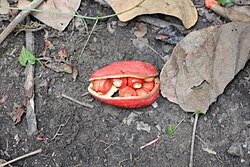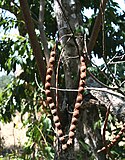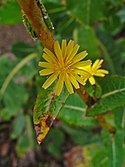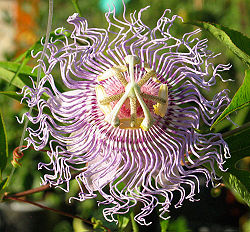Coffea canephora at Aanakkulam
The plant has a shallow root system and grows as a robust tree or shrub to about 10 metres. It flowers irregularly, taking about 10–11 months for cherries to ripen, producing oval-shaped beans. The robusta plant has a greater crop yield than that of Coffea arabica, and contains more caffeine - 2.7% compared to arabica's 1.5%. As it is less susceptible to pests and disease, robusta needs much less herbicide and pesticide than arabica.
Relevante Bilder
Relevante Artikel
Liste von Pflanzen mit psychotropen WirkstoffenDie Liste von Pflanzen mit psychotropen Wirkstoffen enthält Pflanzenarten, die psychotrope Substanzen in bedeutsamer Menge enthalten. Psychotropika werden unter anderem in Analgetika, Halluzinogene, Stimulanzien und Aphrodisiaka als auch noch feiner nach ihrer psychoaktiven Wirkung unterschieden. Der Gebrauch kann zu einer Intoxikation, psychischen und körperlichen Abhängigkeit sowie zu weiteren Verhaltensstörungen führen. Einige Pflanzendrogen fallen unter das Einheitsabkommen über die Betäubungsmittel von 1961 und die Konvention über psychotrope Substanzen von 1971, andere nicht. Näheres regeln die nationalen Gesetzgebungen, insbesondere die Betäubungsmittelgesetze. Die Liste ist nicht vollständig. .. weiterlesen










































